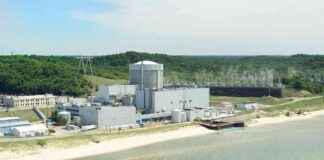The quest for qualified Protection Engineers and Technicians in the power industry is a pressing challenge that continues to puzzle industry professionals and experts alike. As the demand for these specialized roles grows, the supply seems to dwindle, leaving many organizations scrambling to fill crucial positions. What are the underlying reasons behind this scarcity, and how can the industry address this issue to ensure a stable and competent workforce for the future of power systems?
Why Protection Engineers and Technicians are in High Demand
Delving into the intricacies of the field, it becomes evident that the role of a Protection Engineer or Technician is no walk in the park. With a laundry list of required skills ranging from a deep understanding of power systems theory to relay programming and testing, these professionals must possess a robust knowledge base to navigate the complexities of the job. As one industry veteran aptly put it, mastering the art of protection engineering is a continuous learning process that takes years to refine. The lack of formal education and training programs dedicated to protection engineering only exacerbates the issue, with many engineers having to learn on the job without a solid foundation.
Moreover, the perception of protection engineering as a less glamorous or cutting-edge field compared to grid modernization or AI initiatives further contributes to the challenge of attracting top talent. Unlike other areas of power engineering that garner the spotlight for their innovation and technological advancements, protection engineering often operates behind the scenes, only receiving recognition when something goes awry. This lack of visibility and appreciation can lead to feelings of undervaluation among professionals in the field, further deterring potential candidates from pursuing careers in protection engineering.
Addressing the Talent Shortage in Protection Engineering
To combat the shortage of Protection Engineers and Technicians, industry leaders must prioritize the development of specialized training programs and educational pathways that equip aspiring professionals with the necessary skills and knowledge. By collaborating with universities to integrate protection courses into their curricula and offering comprehensive training opportunities for current engineers, organizations can cultivate a pipeline of competent individuals ready to tackle the challenges of the field.
Furthermore, companies must recognize the critical role that protection engineering plays in ensuring the reliability and stability of power systems and invest in dedicated roles for these professionals. By establishing clear career paths and providing resources for continuous learning and development, organizations can attract and retain top talent in the field of protection engineering.
In conclusion, the scarcity of Protection Engineers and Technicians in the power industry is a multifaceted issue that requires a concerted effort from industry stakeholders to address. By acknowledging the unique challenges faced by professionals in this field, investing in education and training programs, and elevating the visibility and importance of protection engineering, the industry can pave the way for a sustainable and skilled workforce that will drive innovation and progress in the power sector.
I encourage professionals across the industry to share their insights and experiences on this topic, as collaboration and dialogue are essential in finding viable solutions to the challenges at hand. Let’s work together to ensure a bright future for protection engineering and the power systems that rely on it.














